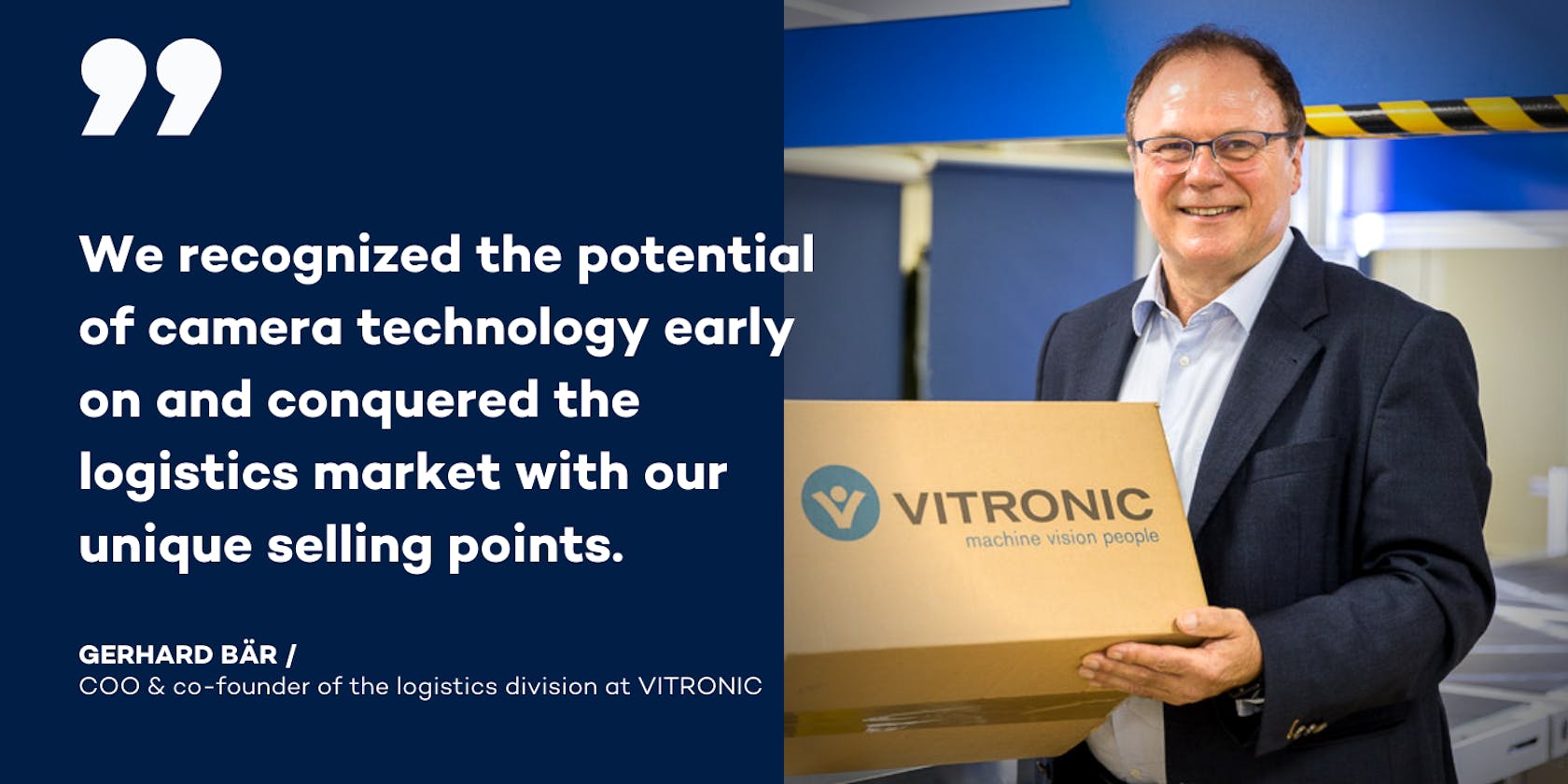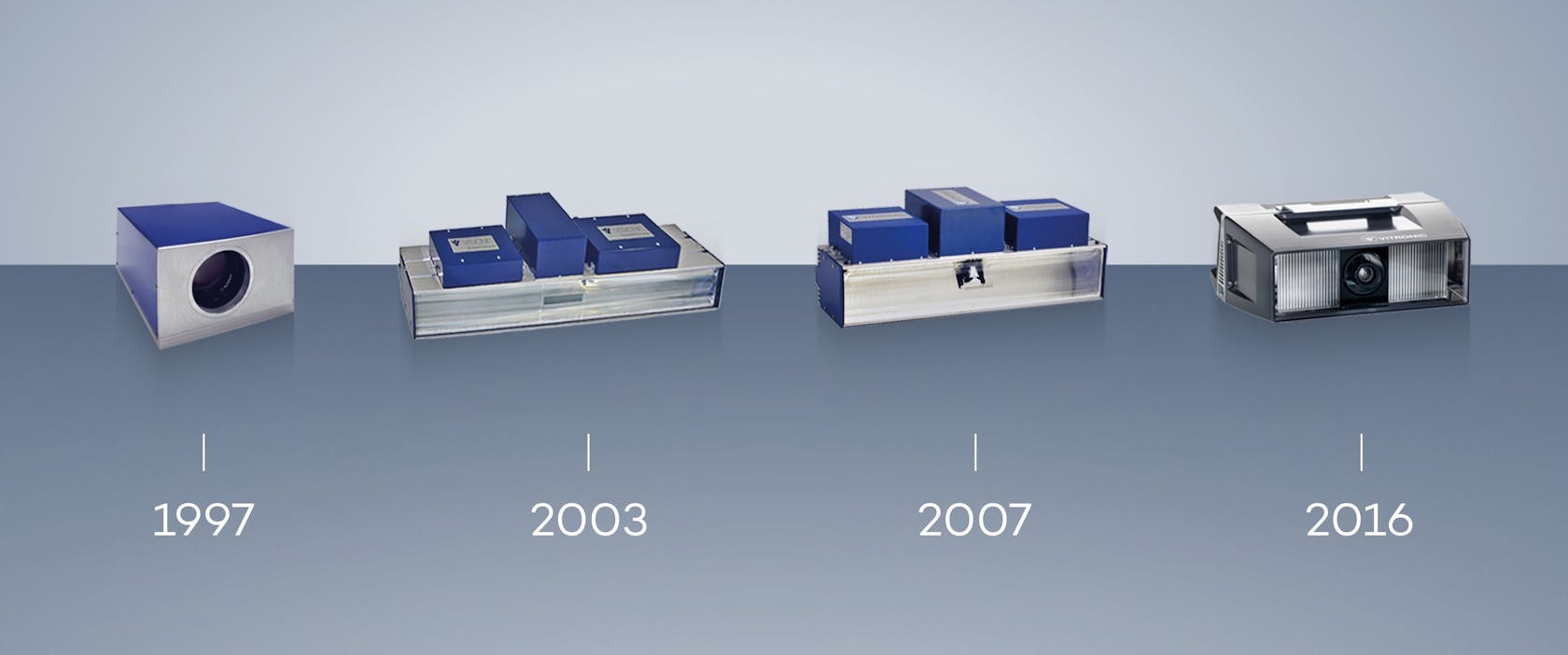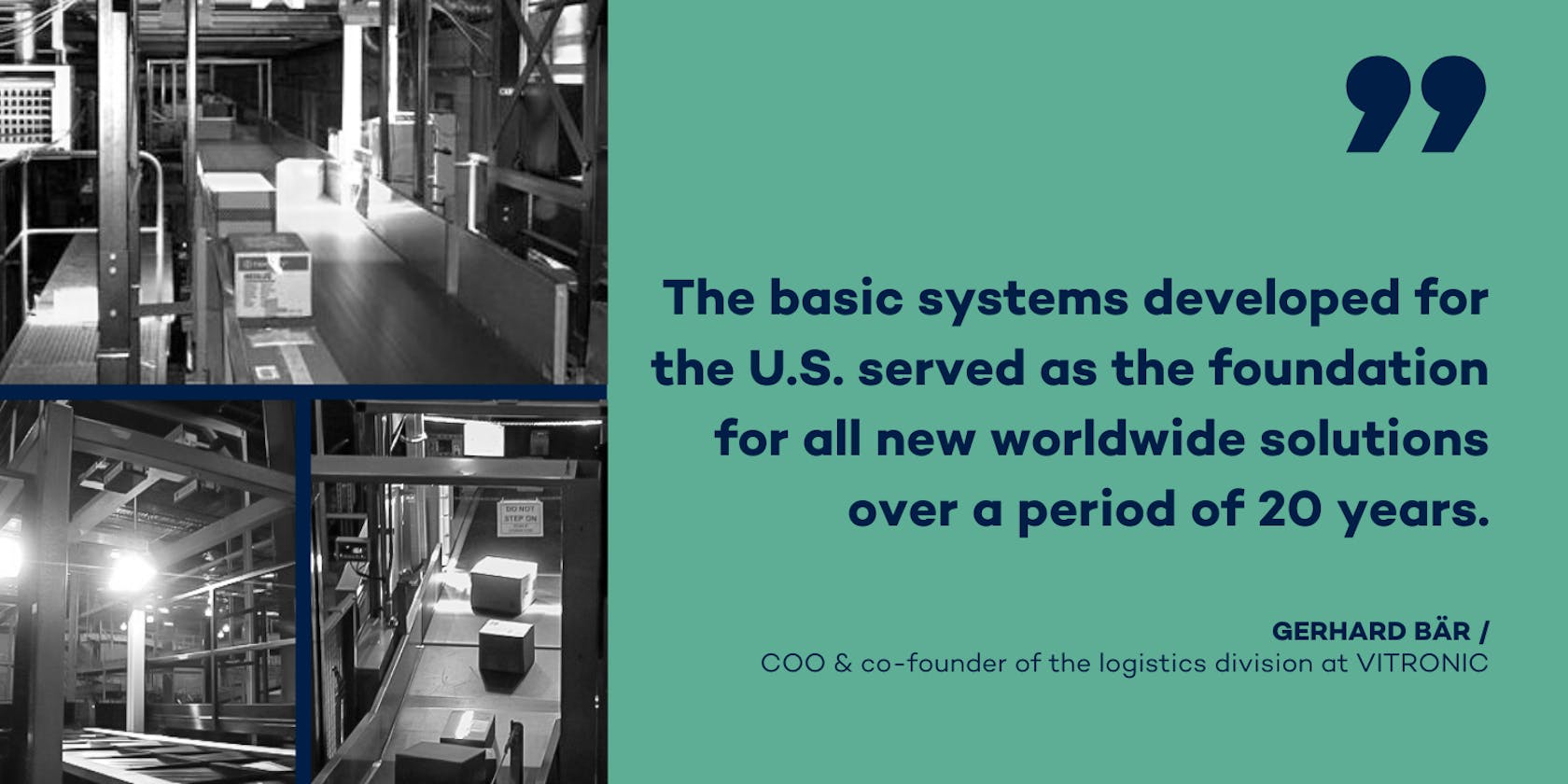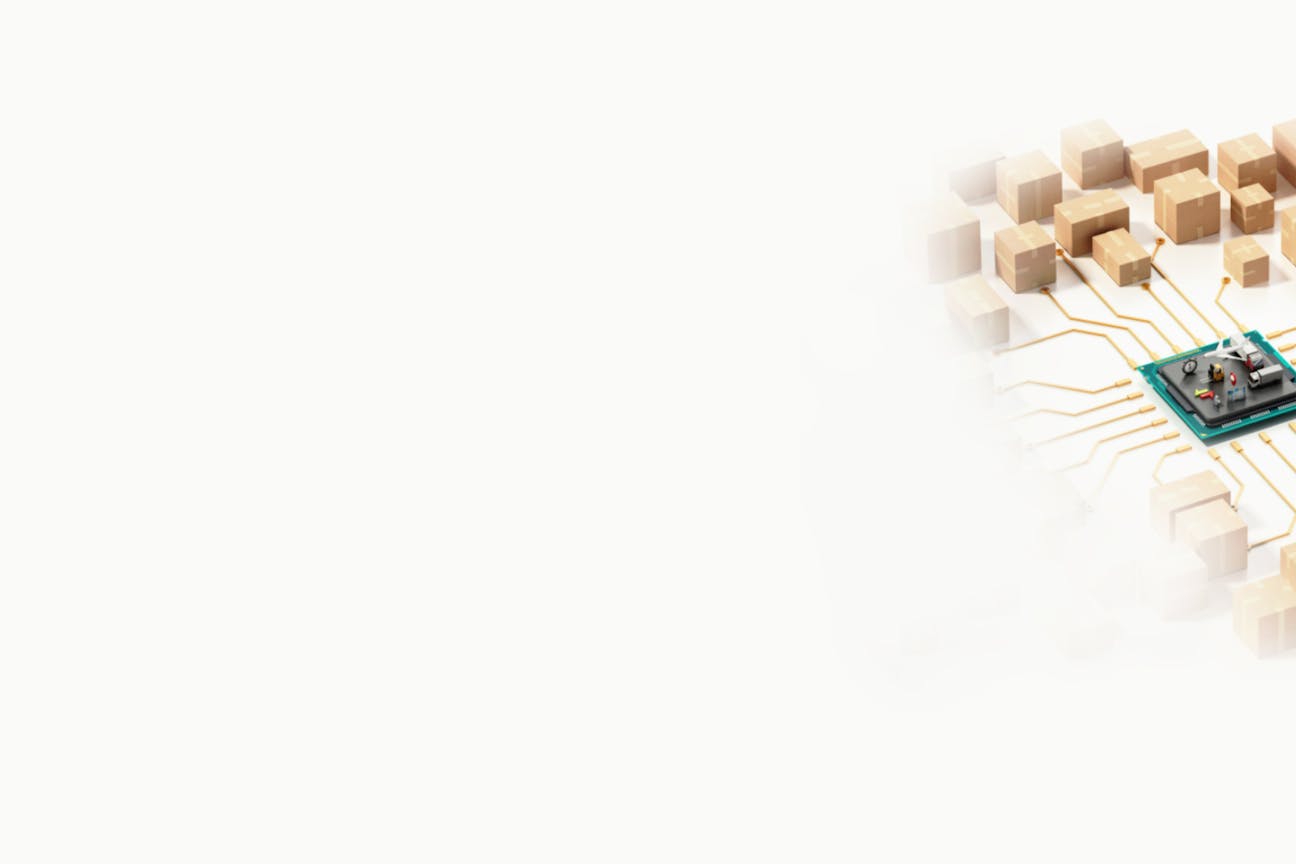
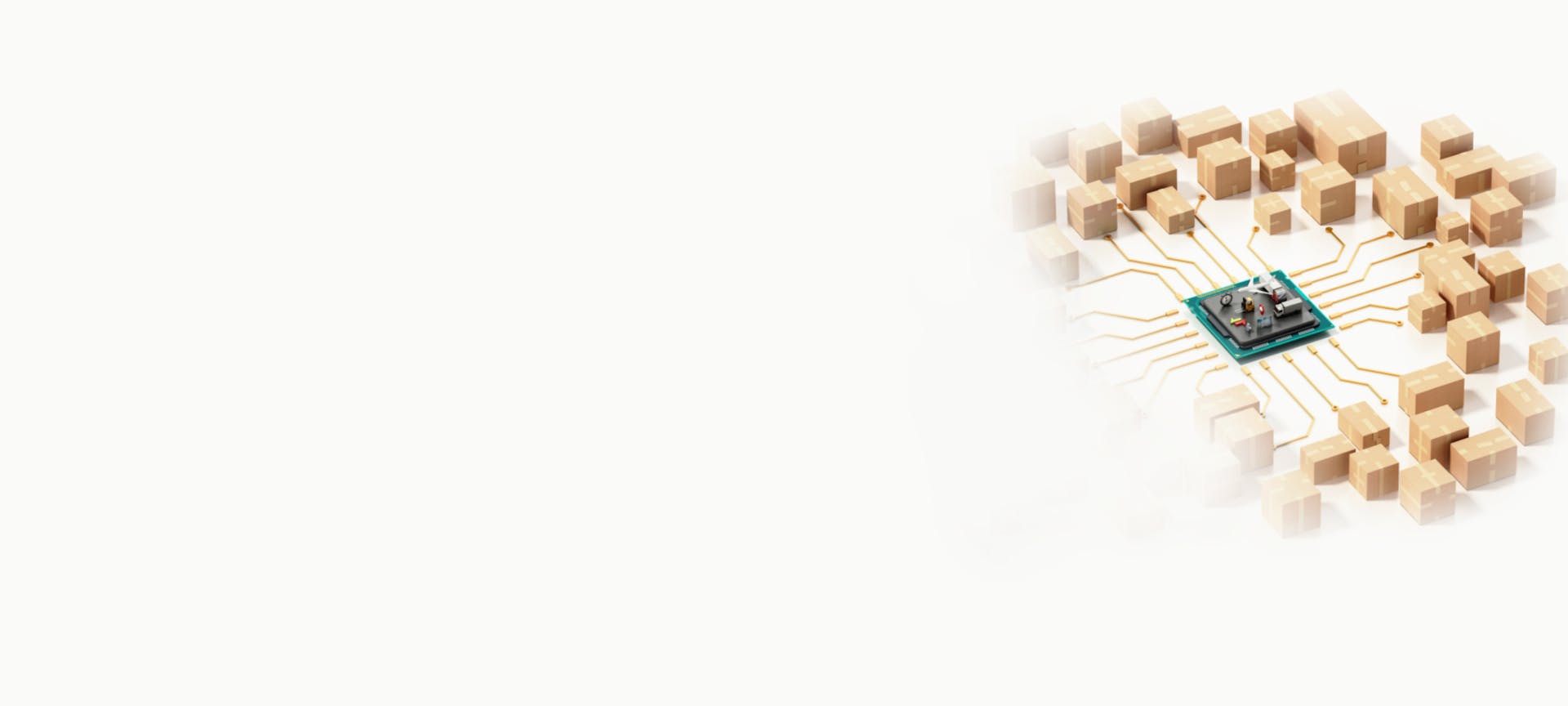
Further Topics
From Niche Product to Industry StandardHow VITRONIC revolutionized the CEP industry with innovative machine vision systems.
The supply chains of logistics service providers are all about reliability, cost-effectiveness and efficiency. For over 35 years, VITRONIC has been providing innovative systems solutions for the logistics automation sector and continues to drive technical development with state-of-the-art camera systems and intelligent software.
Ensuring seamless management of immense flows of goods in parcel logistics has always been a key challenge for the CEP industry. Modern machine vision systems and Auto-ID solutions support the providers, as they automatically record and quickly process all information on letters, parcels and pallets. The information is immediately available for the sorting processes of the logistics service providers.
But this was not always the case: When VITRONIC started to enter the logistics market in 1985, only analogue matrix cameras with a resolution of 1,000 x 800 pixels were available on the market. This corresponds to about one hundredth of the data generated by our line-scan cameras today. Nevertheless, from the very beginning we relied on camera-based solutions, which were still a niche phenomenon at the time.
At the beginning, however, the development did not take place primarily in the logistics environment. Among our first projects was a reading system for the capturing of non-contrast lasered barcodes for the identification of wood chips and the development of a system for reading dirty and heavily damaged barcodes for the chemical company Ciba-Geigy. These codes should be read and reconstructed even behind packaging film. In cooperation with the University of Karlsruhe, we were researching algorithms at the time that could do just that and developed two-dimensional code reading in the process. The matrix camera had the great advantage over scanners: It provided a higher-resolution image with 2D information for evaluation, while laser scanners only had a few 1D scans available for analysis.
In addition, matrix cameras connected side by side were used in the capturing and processing of returns in order to optimize processes. In this context, VITRONIC played a significant role in developing modern Auto-ID systems and was a pioneer in the development of powerful cameras and image processing software. Very soon it became clear that Auto-ID systems based on line-scan cameras could create added value for customers in many industries. Soon the interconnected matrix cameras became obsolete.
Innovation happens if you think outside of the box
Another trend played into our company's hands: camera technology became more affordable in the mid-1980s. This in turn supported our strategy of developing machine vision systems for the CEP industry. Due to its structure and particular challenges, this sector proved to be an ideal field of application and sales market for our technology. And we were right: today it is one of the main beneficiaries of our solutions in the logistics environment.
For 35 years now, our customers have been profiting from the close cross-divisional cooperation at VITRONIC – and from the fact that we think out of the box when tackling industry problems. And so, one of the first significant innovations was a compact line-scan camera. Initially, however, this was designed for application in the traffic technology sector. It allowed the scanning of analogue images of traffic surveillance cameras and the reading of car licence plates via optical character recognition (OCR). In the early 1990s, we had already further developed the OCR technology by providing good image quality and adapted algorithms.
The knowledge gained from traffic engineering soon found its way into the field of logistics. By developing a high-speed autofocus for the line-scan camera and connecting it to our 3D measurement systems, the cameras we developed were able to detect parcels of different shapes and sizes in quick succession at high transport speeds without errors. This improved the reading process enormously. One of our first projects in this context was the reading of returns for major German mail order companies such as Klingel and Otto. Here, the barcode label was read and the return was assigned to the original order. On the other hand, the reason for the return could be identified on the shipping label.
First steps in the CEP industry
UPS, one of the largest American parcel service providers and our first customer in the field of logistics automation, was convinced by our solution. They implemented the technology at their location in Frankfurt-Fechenheim, which was the company's largest automated hub in Europe at the time. In order to be fundamentally successful in the highly competitive environment of parcel logistics, you need efficient solutions with a high level of automation. Auto-ID systems play an important role here. By automatically recording data and integrating it into connected systems, they ensure seamless documentation. However, a necessary precondition for this is that all information on the packages, such as barcodes, 2D codes and plain text, is recognized reliably. Thus, another challenge was the reliable reading of plain text on address labels and other printed information. Laser scanners were not capable of this. Only a camera-based solution came into question. Some challenges remained: Parcels often have banderoles, foils, adhesive tape and handwritten addresses, which complicates the recognition and address identification.
VITRONIC was the first company to capture this information on packages seamlessly and in a single step. To date, we continue to be the only single-source supplier of all the components required.
Manual data matching
Even today, handwritten addresses on private parcels and packages pose a challenge. This specific case accounts for less than five per cent of the total transport volume in the CEP industry, but that is still a lot. To capture parcels accurately where the address labels are not machine-readable, video coding is a suitable solution. In this process, the labels are transmitted as digital images to specially equipped workstations where they are manually added by trained personnel. We had developed this technology in order to be able to guarantee 100 per cent readout. After all, even the best machine vision systems were not able to do this.
Video coding closes the gaps
VITRONIC was the first company to use video coding at the UPS hub in Fechenheim. There we had a throughput of 20,000 parcels per night. To ensure an almost 100 per cent reading, we developed our videocoding system as early as 1995. It was the world's first solution that could transmit large amounts of image data to screen workstations. This way, all data of a package that was not read automatically could be assigned during the sorting process. This meant that expensive and space-consuming post-processing workstations could be avoided. We were able to greatly increase the sorting throughput and, above all, shorten the waiting times of the delivery vehicles. In a quiet office environment, around 30 employees sat at screens and coded the parcels. The process was so successful that we also installed 160 video coding stations with corresponding camera technology in addition to about 200 Auto-ID systems at the Worldport in Louisville (USA), UPS's largest parcel distribution centre worldwide. Furthermore, we developed our first certified volume measurement system VOLUMEC for this application. It is still one of our important key components today.
This was our first major project in the field of logistics automation and in 1999 also the largest project of the then 14-year-old VITRONIC company.
The successful work on the Worldport resulted in the founding of our site VITRONIC Machine Vision Ltd. in Louisville in 1999.
Success in the USA
A particularly successful project of ours in the USA, involving modern camera technology, was the equipping of the United States Postal Service (USPS) with 4,500 specialist cameras. This innovative solution was able to automatically read parcels as soon as an employee walked through the camera detection area with them. The cameras could communicate with the customer's database. They also had loudspeakers that gave the sorting destination of each parcel for manual sorting. We later used the system worldwide for the freight of what is now FedEx subsidiary TNT.
The CEP service provider had been looking for a provider who could measure and identify all freight - from large letters to transport pallets. The generated data and images were archived. The customer could access and use this data anywhere. We won the tender and were able to deliver our systems worldwide.
We have rolled out this solution globally in 56 countries, strongly driven our growth and significantly expanded our worldwide service and hotline offering. This was an incredible motivation for the whole team and a reward for the hard work of the past years!
Looking forward: global archiving in demand
In the future, we will continue to work closely with our customers to automate the capture of their shipments and goods. At the same time, we deliver intelligent solutions for digital data management and the connectivity of all supply chain processes. This is all the more important as the logistics industry is increasingly characterized by the fierce competition of internationally networked markets. Large CEP service providers are therefore progressively standardizing their supply chains. Accordingly, global networking is of central importance. But the required data is not always transparent.
It is therefore necessary to interconnect the systems of all locations and to archive all recorded data such as codes, plain text, weight, volume, dangerous goods labels and image information. This not only enables cross-system and cross-location statistics as well as process analyses and optimizations, but also worldwide shipment tracking. At the same time, together with the customers, we are driving the development in the area of sorting with great strides. With Auto-ID solutions such as the Dimensioning-Weighing-Scanning-System (DWS), we provide complete data for the digitalization of the supply chain and the basis for today's requirements of the CEP industry: same-day delivery and shipment tracking in real time.
